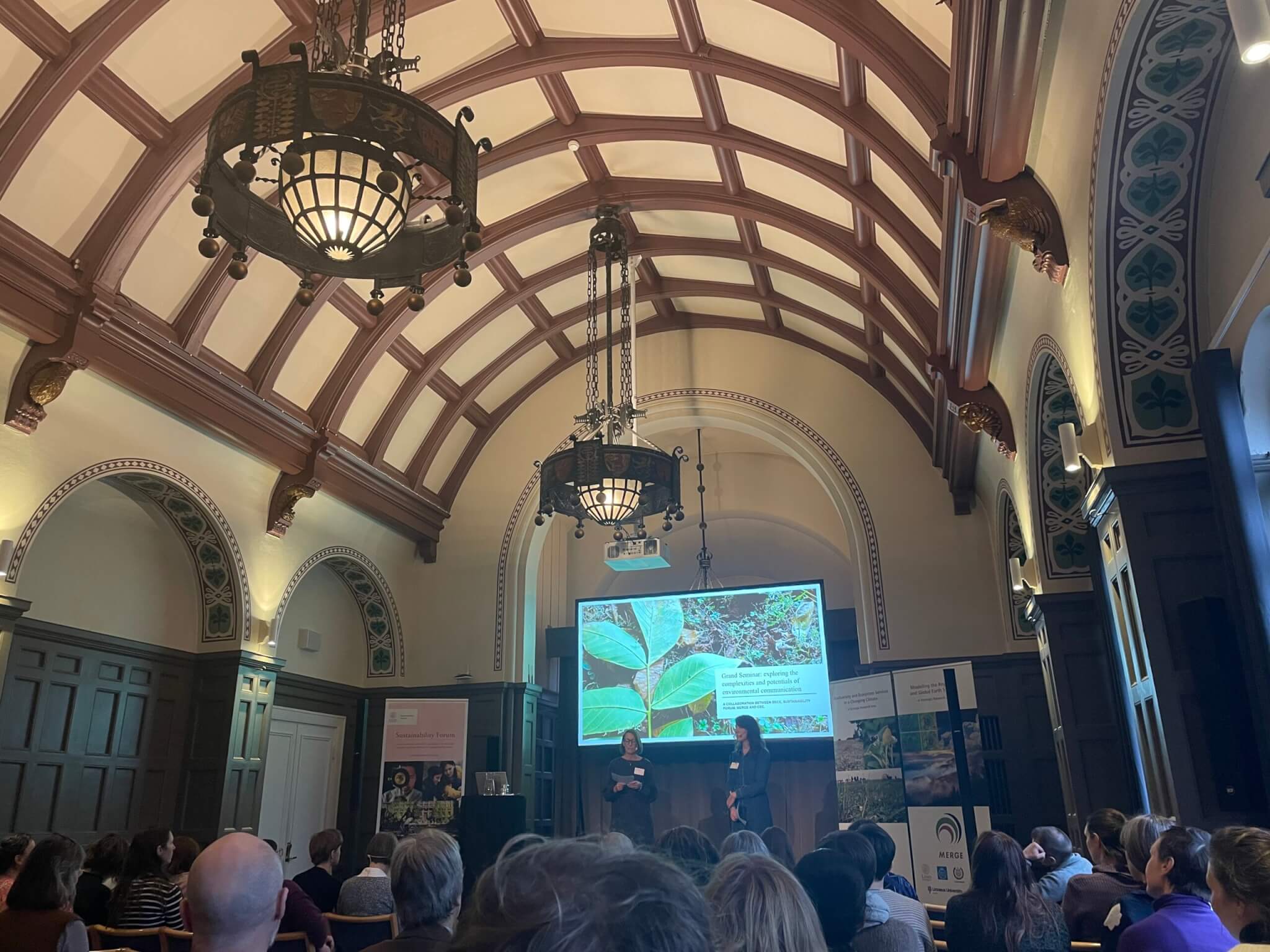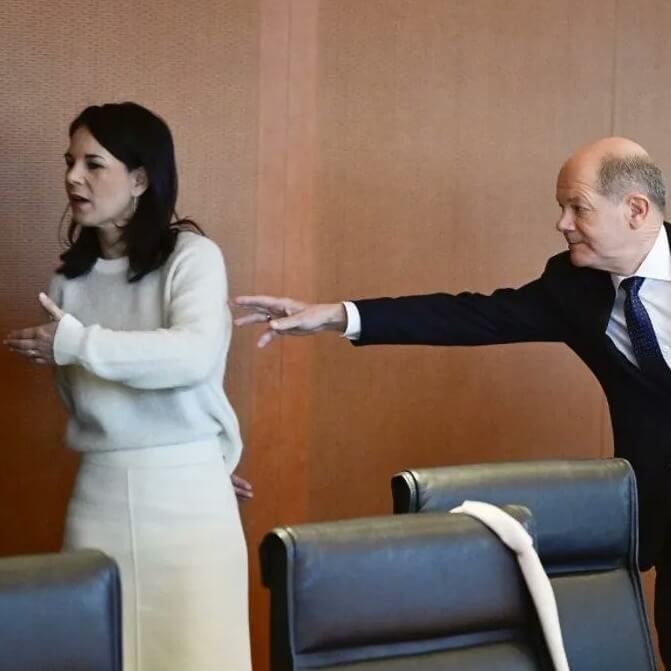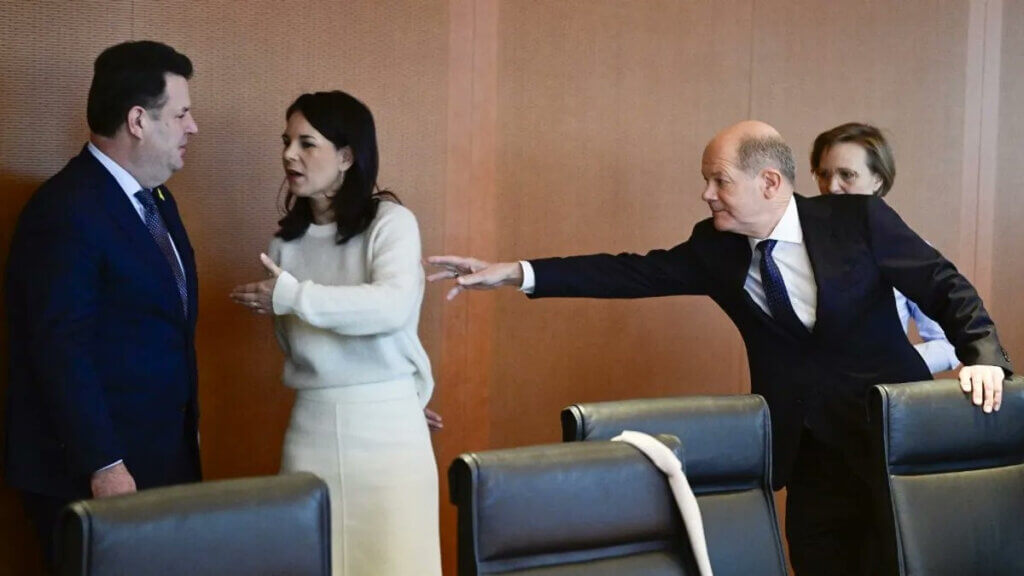
Some thoughts on yesterday’s Grand Seminar “Exploring the complexities and potentials of environmental communication”
Yesterday, I attended the Grand Seminar on “Exploring the complexities and potentials of environmental communication” organised by LU Sustainability Forum, BECC and MERGE at Lund University that my friend Terese had invited me to, and I am glad I did!
It started out very strong, with Nina Wormbs speaking on “Legitimising non-action”. A lot of effort in science communication goes into trying to make people “listen to science”, but in that context “science” most often means STEM. But if we want people to change how they act, we also need to listen to other disciplines. STEM might tell us that we need to act, but not how. And the how very easily becomes ideological and political. Nina Wormbs shared her research on ways people argue for why they act against their own better judgement on questions of sustainability.
There are many reasons for non-acting, both in the biology of the brain AND in how people function as social beings in a culture. Why are we not acting (faster) knowing what we know? For a long time, science communication has used an information deficit model to answer that question, assuming that if you know, you will act. But that is clearly not how things work. There are climate / science deniers, but while we need to understand what is going on with them, they are not the majority.
The majority of people do accept science, want to act, but find themselves acting against their knowledge and intentions. Wormbs presents a study where people self-report in survey, responding to the prompt “Describe an experience of doing what you know you shouldn’t do. How do you deal with the cognitive dissonance? How did you legitimise it in your head to make it “ok”?” They had about 400 respondents, and many respondents gave more than one reason. The most common reasons were
- Account thinking. Here, people balance what they do against what they don’t do, for example “I want to fly. I know I should not, but I bike to work and don’t eat meat, so overall flying is ok”. The problem with that is that everything we do emits CO2 that shouldn’t get into the atmosphere, so balancing isn’t a valid approach. There cannot be a balance, since there isn’t a budget that is “ok” to use. Also, most often the proportions are off between actions that people are trying to balance, between the “good” and “less-good” deeds. If people put more effort into something, it tends to counts more in their imagined balance.
- Comparison. There are always people who do worse than us; or if we are comparing with ourselves, we are at least doing a bit better than we did years ago. There is a lot of “what-about-ism” happening.
- Limitations. People argue for example that they need to take the car to work, even thought the wouldn’t want to, there is no other possibility. There are a lot of goal conflicts in these kinds of arguments. For example, if we want women to be able to be bosses, maybe they need to dive a car to bring their kids to daycare and pick them up again. Or if you live far away from your family, seeing them is valued very highly and emitting seems justified.
- “I am only human”. Here, people say things like “I cannot save the planet by myself” or “I had a tough week, I needed and deserved to do this”.
- “Tiny me”. This is when people argue that their contribution is so tiny, it shouldn’t count in comparison to Amazon or China. However, in democracy, we don’t argue that way, we argue that every vote counts.
- Technology is going to solve it! This is a very common line of arguments in politics (and at LTH), but only surfaced a handful of times from the 400 people!
In this survey, people were asked how they justify things to themselves, as there is always an audience, even for internal arguments, since we are social beings. Our arguments need to not only “work” on us, but they also need to work on people that matter to us. If we question someone’s argument and we matter to them, they might rethink it and either find better arguments or potentially change behaviour.
In a second study, Wormbs investigated how people argue that DO change stuff, e.g. stop flying? Typically they’ve known for a long time that they should change, but then suddenly had some realisation that they need to act, that they can’t escape. Typical triggers for this realisation are reported as
- Fear! All of Fridays for Future is built on fear. Fear can change knowledge into action!
- Having children or grandchildren or some other important child in their life. A child adds another 30 years or so of relevant timeline beyond our own projected lifetime.
- Children bring knowledge from school, and take action like not eating meat any more, and parents need to relate to that, often leading to a change in behavior for them, too
- Comparison that is now not with a neighbour any more, but with other places in the world
- Responsibility. If not me, then who? The will to act in accordance with convictions. “If it all goes down the drain, I want to be able to look my kid in the eye and say I did all I could”
But now the question remains: How do we reach people who want to change? How can we have the meaningful conversations? What we all have to go through is an emotional, painful change and potentially an existential crisis. How do we do it well?
In the discussion following the presentation, the point was brought up on whether we aren’t putting too much responsibility on the individual. What about the system? And here, Wormbs pointed out that there are not just those two levels. Individuals can affect a group (their family, a sports club, their neighbours), a municipality, an enterprise, …, all the way up to national and international governance. And I find that a very hopeful framing! We are going to disagree talking about sustainability, but we need to have the discussions. We need more, and better, conversations. As I wrote recently: The process is the point.
Next, there was a presentation by Mikael Klintman on “Framing: The Social Art of Influencing”.
Framing is an automatic or strategic process to put complex reality into a bounded construction. Framing affects our own and others’ understanding and actions.
- Framing is an amoral art that can be used to strengthen or weaken communication. We can simplify or complicate, clarify or obscure.
- Framing is more than words. For example, we can make a street a bike lane by putting planters as barriers and drawing bikes
- Framing shares similarities with narratives, discourses, boundary work, scripts, but is particularly intuitive.
- Texturing: Making bad seem good. Obligations to opportunities for meaning & value alignment
- Tempering: Making hot what’s not. Making things appear bigger than they are.
- Positioning: Making meanings move.
- Sizing: Making boundaries bend.
During this presentation, I had to think about the image below, which I saw a couple of days ago on social media in the context of the German Foreign Minister waking out on the Chancellor. And it looks quite dramatic, right?

But then a couple of posts after I had first seen it, I saw the same image again, except this time not cropped. Look at the image at the bottom of this post to see the non-cropped version, and how the interpretation of the image changes 180 degrees just by what is cropped of! I saved that picture already then because I was so struck by how differently I reacted to the same image just because of the crop. You don’t even need to manipulate pictures with AI to imply a completely different meaning!
Then, Eric Brandstedt spoke on “Justice arguments, ideology and resistance to the climate transformation”. His premise is that most transformations for sustainability will be beneficial, even if you don’t care about anyone or anything other than yourself. But there are transitional costs. And they are used in common arguments against climate transitions, for example carbon taxes & high fuel prices are seen as unfair for people with low income or living in the countryside; or Sweden shouldn’t have to take more responsibility that China; etc.. Of course, there are some real personal costs, for example people having to relocate (in contrast to just complaining about a wind turbine on the horizon), that need to be compensated for. But many people don’t want compensation, they just want business as usual. And coupled with that, there is an emerging anti-climate ideology, which is sometimes coupled to legitimate moral claims, e.g. human rights, equality, freedom; but often coupled also with populists worldviews. We need to understand and resolve the foundational moral conflicts, or structural injustices, in society that feed the ideology!
One example of how we can have good conversations and potentially change attitudes and actions was then presented by Alexandra Nikoleris and Roger Hildingsson: “Imagination as communication? The potential of envisioning futures for action and research”. They presented three points of departure:
- Communication as part of research — it’s a process in dialogue
- If we want to communicate for action, we need to focus on imagination — envision futures
- The future is open and malleable, but is often portrayed as closed. People kling to the belief of what they think is the most likely future. We need to open up imagination and possibilities little by little and find the right way forward, or, as I wrote the other day, the process is the point!
For people to engage with these types of discussions, we need to concretise (everyday habits and situations), situate (e.g. Lund), and democratise (my voice matters). Nikoleris & Hildingsson use storyworlds, “knowledge-based speculations”, in order to let people imagine the future in a given framing (with some rules). There, they can bridge the gap between imagining something, and actually feeling what it is like to be there. Immersion and time investment make it easier to believe in a vision and engage in it, especially if you are giving a role in which you matter and are heard. They peresent the example of an exhibition, “Carbon Ruins”. It is set in the future (2053, I think), and on display are the last fast-food burger ever sold. A LEGO oil rigg. A concrete core. Frequent flyer cards. The exhibition shows that fossil fuels are everywhere, but it also offers stories looking back on this from the future, when none of this exists in our daily lives any more, and how people then might think about people these days even being rewarded for environmently-harmful behaviour like frequent flying.
In the exhibition, they found different forms of engagement: The originators (the people who build the exhibition), dwellers (who came, visited the exhibition and wrote themselves into the story world, told their story), and explorers (who take it further, react more actively, add new stories and objects OR challenge it, set agenda for their own transition, like for example the Church of Sweden did).
I would have loved to visit this exhibition, I can imagine how it changes how we look at things, and how we can see new possibilities for the world, and for future possible selves, in such settings!
My take-away from the day: Again, the process is the point. We do not know 100% what to do, or how to do it, but we need to take steps in the right direction and then course-correct. And we need to figure out how to speak about, and deal with, goal conflicts, rather than just ignoring them.
And below is the non-cropped picture. With even her blazer still hanging on her chair, why would we think she’s storming out? And why would someone crop the image to suggest it?
